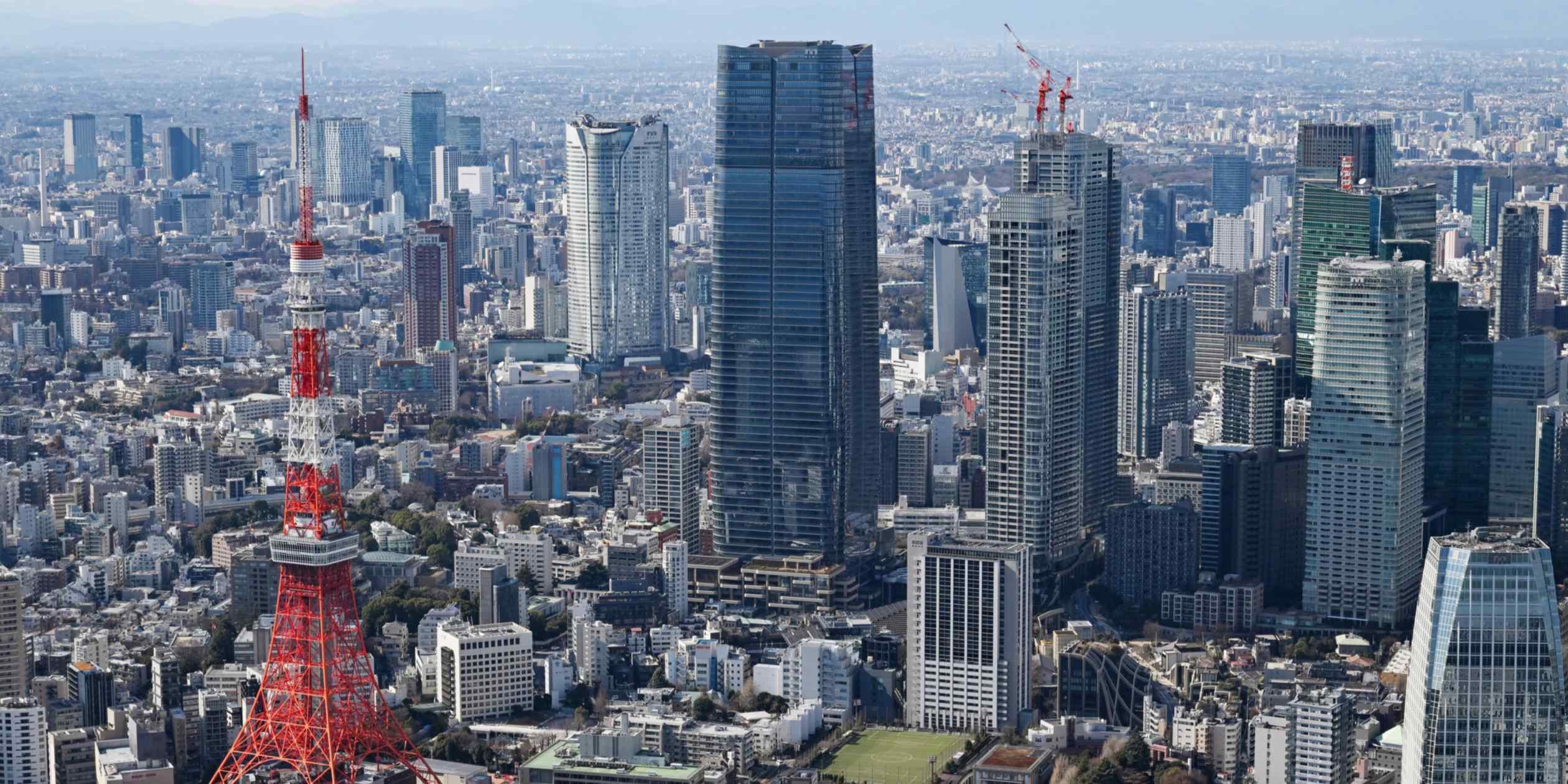
TOKYO — Benchmark land prices in major Japanese cities rose in the first half of 2025 on historically high foreign real estate investment supported by Tokyo's relatively cheap office rents, the weak yen and low interest rates.
Foreign investment in Japanese real estate from January to June totaled 1.14 trillion yen ($7.78 billion), U.S. property services company CBRE reports, the largest first-half figure since comparable data became available in 2005.
Investors see Japan outstripping other countries in the yield gap, which measures real estate profitability by subtracting the long-term interest rate from investment yields.
The yield gap for central Tokyo offices was 1.85% in the first half of 2025, Sumitomo Mitsui Trust Research Institute estimates, higher than New York's 1.75%, Singapore's 1.03% and London's 0.86%.
Tokyo office rents also are comparatively cheap. Real estate services firm Jones Lang LaSalle (JLL) compared April-June office rents in major cities worldwide with their peaks from before the 2008 global financial crisis. Tokyo was about 30% cheaper, while London was about 40% more expensive and New York was roughly at its peak.
Per square foot, Tokyo is about 80% of New York's price in dollar terms.
"Tokyo's office vacancy rate may remain low until around 2027," JLL's Yuto Ohigashi said. "Going forward, rents will likely rise."
Big companies are increasingly expanding their offices amid a boost in hiring and a return to in-office work. Honda Motor said at the end of August it would relocate headquarters functions from a temporary location in Tokyo to a building elsewhere in the city, giving it nearly seven times more space per floor.
Demand also is surging near major stations. In January-June 2025, the base land price in an area southeast of Hatchobori Station in Tokyo's Chuo Ward rose 25%, the eighth-highest increase in commercial land nationwide and up from 11.3% growth in 2024.
Japan's weak yen and lower interest rates than other countries also fuel the capital inflow.
Though the Bank of Japan has raised rates gradually, CBRE senior director Chinatsu Hani said "the current gradual increase in interest rates is within investors' tolerance. Interest rates themselves are also lower than overseas."
Base prices for residential land in regional areas — excluding Japan's four big regional cities of Sapporo, Sendai, Hiroshima and Fukuoka — remained flat. But with foreign visitors expected to surpass 40 million for the first time in 2025, investment is gathering in Japan's resort areas.
Residential prices are soaring in some regional areas, driven by booming demand for vacation homes and condominiums. Among residential areas nationwide, an area of the Hokkaido city of Furano topped the list with a 27.1% increase.
In Furano, corporations and individuals seek new investment opportunities, especially in small-scale properties like private lodgings. Properties 30 to 40 years old, with prices of 30 million to 40 million yen, are seeing a flood of inquiries.
A push for semiconductor factories has caused regional land price fluctuations. Residential land prices in the Miyagi prefecture village of Ohira in northeastern Japan rose by 4.1% in the first half of 2025, down from an 11.5% increase in 2024.
In October 2023, Japanese financial services group SBI Holdings and Taiwan's Powerchip Semiconductor Manufacturing Corp. announced plans to enter an industrial park in Ohira. But SBI announced the end of the partnership in September 2024, resulting in the cancellation of the prefecture-led plans and putting downward pressure on surrounding residential land prices.
Kumamoto prefecture on the southernmost main island of Kyushu has been booming thanks to the start of mass production at the first Japanese plant from Taiwan Semiconductor Manufacturing Corp., the world's largest contract chipmaker, at the end of 2024, as well as the accumulation of related industries.
The average rate of increase for all land types in Kumamoto was 1.2% in 2023 and 1.8% in 2024. But it narrowed to 1.7% this year.
Kumamoto appears to have an oversupply of condominiums and apartments, and the steady rise in industrial land prices over the past few years shows signs of slowing. TSMC has delayed the start of construction for its second factory from January-March 2025 to the second half of the year.
by Dapper-Material5930
